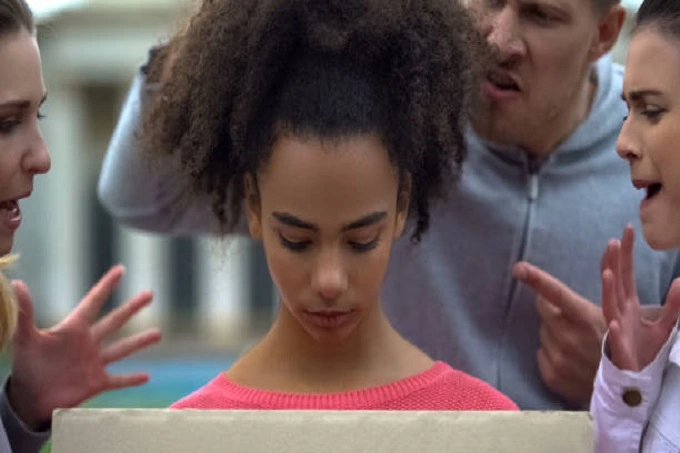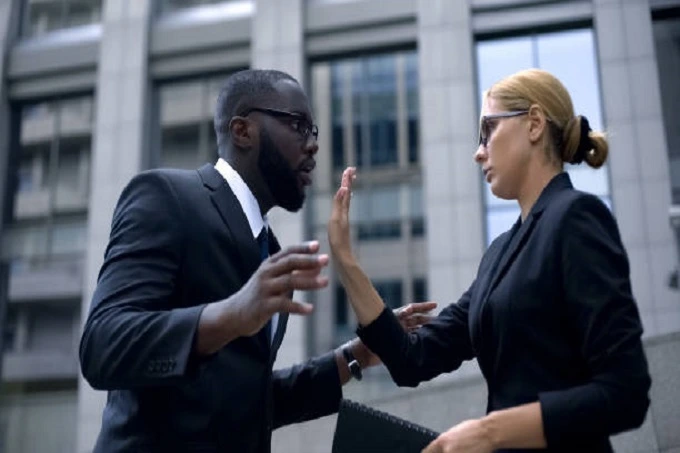Microaggressions at work: meaning and how to respond to it

Negative words and actions towards certain social groups or people belonging to them are called microaggressions. Stereotyping thinking, prejudices, or generalized conclusions from bad experiences appears. But such behavior negatively affects the emotional and mental state of the people directed at it. You will learn more about how microaggression manifests itself and what to do if someone shows it to you from this article.
What is microaggression
Microaggression combines beliefs, assumptions, insults, and hidden prejudices against certain people. They often appear as part of racism or intolerance towards certain social groups.
Microaggression can be intentional or not, hidden or open, verbal or non-verbal. But no matter how it looks, it invariably hurts the one it is aimed at. Unlike ordinary aggression, negative actions and offensive phrases are closely related to the person’s belonging to a discriminated against or stereotyped group.
The main types of manifestation of microaggression include:
1. Microattacks
This way of expressing microaggression includes remarks, comments, insults, and dismissive facial expressions. It can also completely disregard the object of aggression and outright discrimination. An example of a micro-attack would be restricting entry to an event for members of a particular race or nationality. Or the use of an unpleasant nickname for people from the same social group.
2. Microinvalidation
These are cases where the experience of a certain group is downplayed, completely denied, or discredited. For example, many people claim that women drive worse than men. Or that representatives of Asian culture cannot understand all the greatness of the Renaissance because of the difference in traditions.
3. micro-insults
Suppose micro-attacks are directed at a certain group of people and are expressed in relation to it. In that case, micro-insults affect the personality of the individual who belongs to them, which may not always be noticeable when communicating or joking.
For example, someone may believe that a woman was hired to a serious position to enhance the company’s image, not because of her merits. Or joke that his friend, who is receiving a liberal arts education, will have to get a job in public catering, as there is no decent job.
The most common examples of microaggressions

To better understand how microaggression manifests itself, it is worth considering examples you may have encountered in everyday life. Often aggression takes the form of questions addressed to a specific person.
The interlocutor may clarify: “How did you manage to get into this company?” implying that his opponent does not have enough qualifications and skills to cope with the job and hold his position.
Also, some people like to say: “You are lucky that you are beautiful; it is so easy for you to make friends and partners.” Unfortunately, such a manifestation of stereotypical thinking and bias has nothing to do with reality and offends. After all, to make friends or attract a partner, you need a beautiful appearance.
But there are also less harmless manifestations of microaggression. For example, people refuse to enter an elevator or sit next to a bus with a certain race or nationality representative. However, they do not show any signs of aggression or danger. Or refuse to hire them.
Why microaggressions are harmful
Unfortunately, many people do not see anything wrong with micro-aggressive statements or actions, explaining this by their worldview or social position. But they negatively affect the mental and emotional state of those exposed to it.
People may feel inferior, experience high levels of stress, and lose motivation to do their jobs or interact with others. There is also a general loss of trust in people, mainly if the microaggression is based on racial or gender stereotypes.
In addition, it drives people into certain stereotypical limits, which, in the opinion of the aggressors, they must comply with. And if this does not happen, they, again and again, suffer from the negativity coming towards them.
People experience discomfort and negative emotions when exposed to microaggression can cause phobias, depression, and disappointment in life.
How to respond to microaggressions

People can make mistakes and say and do hurtful things by accident. In this case, it is worth noting that such statements and actions are unpleasant for you, and an understanding interlocutor next time will refrain from such a thing and apologize. And with those who do not consider microaggression offensive, it is worth behaving differently.
1. Ask for more clarification
For example, someone tells you that all blondes are stupid. Ask how the person came to that conclusion. This usually discourages the interlocutors and exposes them in an awkward light. And the arguments they give are extremely subjective, which provides a good opportunity to challenge them, and in extreme cases, to respond sarcastically.
2. Hint at the causes of microaggressions
If talking about the fact that some words or actions of the interlocutor are unpleasant to you did not help, it’s time to disarm him. Hint at the reasons for micro-aggressions that make him look bad. Use this behavior as a last resort, as your opponent is likely to be defensive, and the conversation may escalate into a conflict.
For example, if opponent hints in a hurtful way that you do not understand aspects of your profession assume that the root of the problem lies in his fear that someone is a better specialist than he is. Or in the desire to feel superiority for no apparent reason.
3. Give me a compliment
This is one of the diplomatic ways to reduce uncomfortable dialogue to nothing. It works well with familiar people who are likely to take note of your words.
Tell the interlocutor: “Friend, you are so smart and well-mannered; why say such offensive things” or “You are a very good person, but such statements sound very offensive.”




